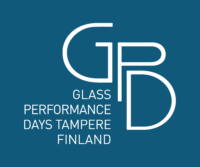An engineering approach
for the basic design of glazed surfaces under blast waves


Nowadays the design of blast-resistant glazed façades is acquiring importance to comply with building safety standards. The high-pressure generated by the blast-wave air-front can lead to catastrophic failure of the glass panes and/or their load-bearing structure, with a possible projection of fragments that constitutes a potential threat for human lives and properties.
The time-dependent deformations-history is usually assessed via numerical analyses and/or experimental investigations, but it is difficult to recognize the role of each element in the dynamic response of the whole. Here, to guide structural design, we propose a simple analytical model that permits a synthetic view of the phenomenon.
The dynamic interaction between the blast wave and the ensemble of glazed panels and load-bearing structure is studied in few paradigmatic lumped element models, representing glass panels supported by beams or tensioned cables, using Rayleigh’s method to reduce the plate-behavior of each glass panels to a single-degree-of-freedom oscillator. With reasonable approximations of the Friedlander waveform, the dynamic equations are solved. This analytical treatment quantifies the importance of the load-bearing structure in absorbing the biggest part of blast wave energy, to preserve the integrity of the glass.
Authors
Massimo Maffeis
Maffeis Engineering | Italy
Gianni Royer-Carfagni
Maffeis Engineering | Italy
Department of Engineering and Architecture
University of Parma | Italy
Construction Technologies Institute
Italian National Research Council | Italy
Luca Viviani
Department of Engineering and Architecture
University of Parma | Italy
Construction Technologies Institute
Italian National Research Council | Italy
